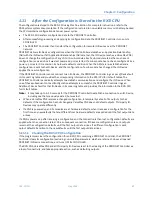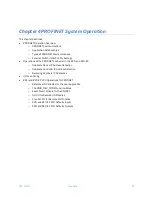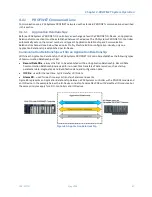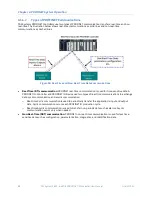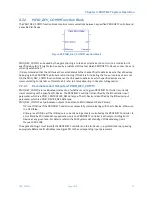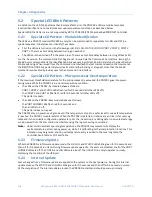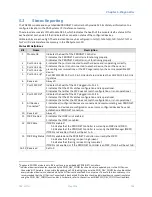
Chapter 4. PROFINET System Operation
GFK-2571N
May 2018
97
4.7.2
PNIO_DEV_COMM Function Block
The PNIO_DEV_COMM function block monitors communications between a specified PROFINET Controller and
a specified IO-Device.
Figure 92: PNIO_DEV_COMM Function Block
PNIO_DEV_COMM can be used by the application logic to take a corrective action or turn on an indicator if a
specific device fails. It might also be used by a custom HMI to show which PROFINET IO-Device connections are
currently established.
It is recommended that the
All Devices Connected
status bit be checked first to determine whether all devices
belonging to the PROFINET Controller are functioning. If this bit is 0, indicating that one or more devices is not
OK, the PNIO_DEV_COMM function block can then be used to determine which specific devices are not
communicating. For details on this status bit, refer to
4.7.2.1
Parameters and Outputs of PNIO_DEV_COMM
PNIO_DEV_COMM returns a Boolean indication of whether or not a given PROFINET Controller is currently
communicating with a specified IO-Device. The PROFINET Controller is identified by the IOController input
parameter, which is a PNIO_CONTROLLER_REF data type. The IO-Device is identified by the IODevice input
parameter, which is a PNIO_DEVICE_REF data type.
PNIO_DEV_COMM has two Boolean outputs (in addition to ENO) labeled OK and Primary.
OK
is set ON/true if the PROFINET Controller is successfully communicating with the IO-Device; otherwise
it is OFF/false.
Primary
is set ON/true if the IO-Device is currently being actively controlled by the PROFINET Controller. In
a Hot Standby CPU redundancy application, only one PROFINET Controller is actively controlling an IO-
Device at any given time. For details, refer to the
PACSystems Hot Standby CPU Redundancy User’s
Manual,
GFK-2308.
The application logic must identify the PROFINET Controller and the IO-Device in a symbolic manner, passing
appropriate Reference ID Variables (see Figure 93) to the corresponding input parameters.

